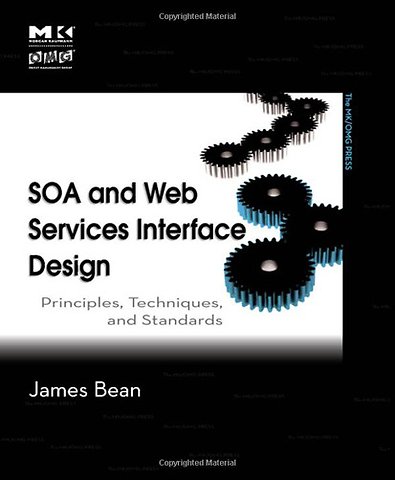


James Bean, CEO, Relational Logistics Group, Phoenix, Arizona, U.S.A.
Meer over James BeanSOA and Web Services Interfaces Design
Principles, Techniques, and Standards
Samenvatting
With the introduction of increasingly complex Web services over the last decade, there has been an explosion of interest in service-oriented architecture (SOA), a structural style whose goal is to achieve a coupling of interacting services - functionalities such as filling out an online application for an account, viewing an online bank statement, or placing an online booking or airline ticket order. These services operate through specific interfaces that control and define their operation. However, due to the evolving nature of enterprises, new services and applications must often be incorporated into these same interfaces. Such incorporation can be costly and complex if the original interface is inflexible or incompatible with the technology utilized by the new applications.
In his new book, data architecture guru James Bean teaches you exactly how to design web service interfaces that are capable of being extended to accommodate ever changing business needs and promote incorporation simplicity.
The book first provides an overview of critical SOA principles, thereby offering a basic conceptual summary. The book then provides explicit, tactical, and real-world techniques for ensuring compliance with these principles. Using a focused, tutorial-based approach the book provides working syntactical examples - described by Web services standards such as XML, XML Schemas, WSDL and SOAP - that can be used to directly implement interface design procedures, thus allowing you immediately generate value from your efforts. In summary, SOA and Web Services Interface Design provides the basic theory, but also design techniques and very specific implementable encoded interface examples that can be immediately employed in your work, making it an invaluable practical guide to any practitioner in today's exploding Web-based service market.
- Provides chapters on topics of introductory WSDL syntax and XML Schema syntax, taking take the reader through fundamental concepts and into deeper techniques and allowing them to quickly climb the learning curve.
- Provides working syntactical examples - described by Web services standards such as XML, XML Schemas, WSDL and SOAP - that can be used to directly implement interface design procedures.
- Real-world examples generated using the Altova XML Spy tooling reinforce applicability, allowing you to immediately generate value from their efforts.
Specificaties
Inhoudsopgave
1. SOA – A Common Sense Definition
2. Core SOA Principles
3. Web Services and other Service Types and Styles
4. Data, the Missing Link
5. Data Services
6. Transformation to Resolve Data Impedance
7. The Service Interface – a Contract
8. Canonical Message Design
9. The Enterprise Taxonomy
10. XML Schema Basics
11. XML Schema Design Patterns
12. Schema Assembly and Reuse
13. The Interface and Change
14. Service Operations and Overloading
15. Selective Data Fragmentation
16. Update Transactions
17. Fixed Length Transactions
18. Document Literal Interfaces
19. Performance Analysis and Optimization Techniques
20. Error Definition and Handling
Appendix
A.1: Glossary and Abbreviations
A.2: Web Services Standards
A.3: References and Bibliography
Index
Anderen die dit boek kochten, kochten ook
Net verschenen
Rubrieken
- aanbestedingsrecht
- aansprakelijkheids- en verzekeringsrecht
- accountancy
- algemeen juridisch
- arbeidsrecht
- bank- en effectenrecht
- bestuursrecht
- bouwrecht
- burgerlijk recht en procesrecht
- europees-internationaal recht
- fiscaal recht
- gezondheidsrecht
- insolventierecht
- intellectuele eigendom en ict-recht
- management
- mens en maatschappij
- milieu- en omgevingsrecht
- notarieel recht
- ondernemingsrecht
- pensioenrecht
- personen- en familierecht
- sociale zekerheidsrecht
- staatsrecht
- strafrecht en criminologie
- vastgoed- en huurrecht
- vreemdelingenrecht





